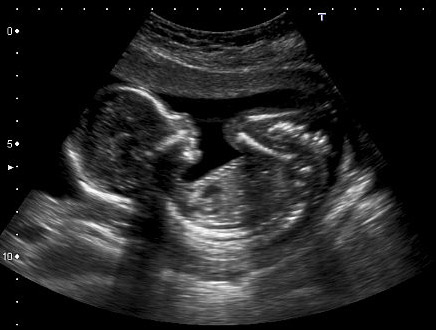| Dr. Robert Sapolsky on the Stress Response |
| Dr. Robert Sapolsky, explains the importance of understanding the stress response in humans and how chronic stress can lead to detrimental outcomes to an individual's health. [2] |
Members: Sivaniya Subramaniapillai, Camellia Dinyarian, Han Chin Lin, Stephany Francisco, Maha Islam, Apittha Unahalekhaka, Cawei Li, Tania Sanclemente, Martin Poon, Zhuoliang Li, Amalan Tharumagulasingam
Stress is the perception of a stimulus as being overwhelming or potentially threatening. It is relevant because it affects individuals of all ages. Throughout development, stress has the potential to modify structural regions of the brain, notably the hippocampus, which is vulnerable to effects of stress, and can either impede or enhance cognition. Moreover, repeated or restrained stress has been shown to cause a reduction in the apical dendritic spine in the prefrontal cortex [1]. Different components of stress that will be covered include stress on the developing brain, neuroanatomy and neurochemistry, cognition, and stress-induced disorders. Furthermore, specific areas of cognition such as learning and memory are negatively and positively influenced by stress and different pathways are recruited to underline these effects. Extreme forms of stress put individuals at a higher risk for neurological disorders, including generalized anxiety disorder, depression, and post-traumatic stress disorder. It is important to recognize stress in order to determine appropriate measures of treatment. Many techniques of successfully managing stress have been identified by using hormonal control and improving neuroplasticity, such as meditation, sleep, music, and exercise.
|
Table of Contents |
01 Effects of Prenatal Stress
main article: 01 Effects of Prenatal Stress
author: Tania Sanclemente
| Fetal Ultrasound |
 |
| Where the prenatal stress occurs. Picture take from http://www.douglas.qc.ca/info/prenatal-stress |
Stress can affect an organism before its birth, and prenatal stress during critical periods of development can influence the development of the brain. The brain acts as the centre of control for organisms and imbalances in it can result in greater susceptibility to disease and/or predispositions to psychological and psychiatric disorders [Bibliography item example1 not found.]. Areas affected have been found to be involve, but not be limited to, the prefrontal cortex, hippocampus, amgydala and cerebellum, with symptoms ranging from poorer intellectual functioning, to behavioural problems to impaired motility [Bibliography item example2 not found.]. At this point in development individuals lack consciousness and their quality of life and societal contributions are the responsibility of the parentals: thus, it is vital to raise awareness and take preventative measures so as to ensure a healthy future population.
02 Stress Induced Plasticity in the Glumatatergic System
main article: 02 Stress Induced Plasticity in the Glumatatergic System
author: Zhuoliang Li
Stress, something we experience daily, is believed to have powerful effects on our brain by influencing the neurochemistry within our brain. One of the neurotransmitter systems significantly altered by stress is the glutamate system. Emerging evidence has shown that stress can act on the glutamate system directly or indirectly via corticosteroids, the hormones released by the hypothalamus-pituitary-adrenal (HPA) axis in response to stressors. [1] Profound plastic effects are observed in the limbic and prelimbic areas after both acute and chronic exposure of stress [1]. After both acute and chronic exposure to stress, the overall glutamatergic transmission increases as a result of alterations to multiple mechanisms including the release and the uptake of glutamate. [2],[3],[4],[5] Intracellularly, acute and chronic stress activates different pathways resulting in different cognitive consequences. Acute stress activates serum and glucocorticoid regulated kinase (SGK) mediated pathways and is implicated to have a cognitive enhancement effect. [4] On the other hand, chronic stress promotes cell death by either downregulating genes responsible for cell survival in the CREB mediated pathways6 or upregulating pro-death genes mediated by the FoxO3a. [7],[8] The excitotoxic effect and irreversible alterations as a result of chronic stress are associated with neurodegenerative disease and psychiatric disoders.
03 The Effects of Stress on Memory
main article: 03 The Effects of Stress on Memory
author: Camellia Dinyarian
Stress is something that every individual must deal with on a day to day basis. Although stress influences a number of our bodily functions, one key impact it has is on our memory. Although many studies have been performed to suggest memory is impaired by stress, it is not so clear cut. Important factors that mediate the effects of stress on memory is the type of stress being induced and the emotional saliency of the stimuli. The stage in which stress is being experienced is also important, as it has been found that stress enhances consolidation, impairs retrieval and has both positive and negative effects when implicated with the encoding stage [2][5]. Glucocorticoids, especially cortisol, have been implicated in the effects of stress on memory. Different regions of the brain are also involved in stress and cognition, such as the hippocampus, amygdala [6] and prefrontal cortex [3]. The interactions between such regions during different stages of memory help understand the mechanism involved. One specific mechanism that has been investigated is the CaMKIIα-BDNF-CREB pathways [1] which have been found to be the underlying mechanism for the positive effects of stress on consolidation.
| Figure 1 |
 |
| Stress and its influence on memory [Bibliography item 34 not found.] source: http://www.huffingtonpost.co.uk/2012/09/14/health-stress-disrupts-short-term-memory_n_1883457.html |
04 Generalized Anxiety Disorder
main article: 04 Generalized Anxiety Disorder
author: Han-Chin Lin
| Generalized Anxiety Disorder |
 |
| image taken from http://www.healthcentral.com/anxiety/17191-146.html |
Generalize anxiety disorder (GAD) is one of the common stress related disease. The distribution of GAD among age groups is rather wide but higher incidence rate occurs in elderly group. [1] Sadly to say, actual mechanism of how GAD arises still not really known but there are many models that are explainable for the cause of the diseases. In more molecular biology aspect, GAD might cause by the malfunction of GABA receptor complex which is responsible for interacting with inhibitory neurotransmitter. [5] When it comes to higher brain function and hormonal system, the abnormal secretion of adrenaline and serotonin can lead to over-activation or hypo-function of higher brain complex. [6] Moreover, Genetic defects like the duplication of DUP25 area in chromosome 15 might also contribute to the anxiety related disorder. [3] Common syndromes include fatigue and restlessness and these symptoms exist more than 6 months based on current diagnostic criteria. Treatments include both psychological and conventional drug therapy. However, due to the chronic nature of GAD, psychological and drug treatments are limited and relapse cases can occur. Moreover, the co-morbidity characteristic of GAD also put a burden on distinguishing GAD from other mental health disorder. [4][5] Therefore, the research on the potential new treatment and diagnostic tools are important to relieve current situation. One important discovery done by Alexander B and others showed that Rhodiola rosea might be able to help patient with GAD. [2] This has shed a new light on clinical practice and might provide less harmful and sustainable way for dealing with GAD in the future.
05 Stress Induced Depression
main article: 05 Stress Induced Depression
author: Maha Islam
| Depression |
 |
| Source: http://cuntinglinguist.com/wp-content/uploads/2013/02/depression1600x1200.jpg |
Stress inhibits neurogenesis at the hippocampus of adult brains and this inhibition is linked to the development of depression. As a result, patients with depression observe a reduced hippocampal volume [1]. Depression and stress also lead to a reduction in synaptogenesis in the prefrontal cortex and hippocampus and impairments in synaptic neurotransmitter release. Therefore treatment strategies, such as antidepressants, promote neurogenesis at the dentate gyrus of the hippocampus and improve synaptic connections in the prefrontal cortex in an effort to achieve remission [2][3].
06 Posttraumatic Stress Disorder (PTSD)
main article: 06 Posttraumatic Stress Disorder (PTSD)
author: Amalan
| Posttraumatic stress disorder |
 |
| Symtpoms of an individual suffering from PTSD |
Posttraumatic stress disorder (PTSD) is a severe form of stress that arises from a traumatic psychological event that occurs in an individual’s life. Examples of events which result to a consequence of PTSD range from physical extremities, exposure to violence or various life-threatening experiences. Possible origins of PTSD can be dated back as the late 1500s,[1] but awareness of the disorder arose from 19th century medical doctors trying to diagnose the ill effects of soldiers after returning from battle. Being a severe, traumatic psychological disorder, there are many symptoms individuals go through as a result of it, and these numerous symptoms associated with post traumatic stress disorder can be classified into three categories: reminder of exposure, activation (such as hyperarousal and insomnia), and deactivation (such as dissociation and withdrawal).[2] As an effect of it being a psychological trauma, consequences of PTSD does not only result in symptoms that can be recorded physically, but it is also known to have an effect on the neurophysiology of PTSD patients, with emphasis on the activity level of sensory-motor regions and frontal cortices of the brain. [3]
07 Innovative Treatments for Posttraumatic Stress Disorder
main article: 07 Innovative Treatments for Posttraumatic Stress Disorder
author: Stephany Francisco
| Innovative Technology for PTSD therapy |
 |
| Computerized cognitive behavioural therapy is being widely used to treat PTSD[6] |
Common therapeutic methods for posttraumatic stress disorder (PTSD) include psychotherapy, cognitive behavioural therapy (CBT) and drug therapy. Treatments for PTSD aim to decrease stress and hyperarousal when recalling highly traumatic events[1]. Several therapies reduce positive and negative symptoms by altering pathways involved in memory reconsolidation [2]or by interfering with the hypothalamus-pituitary-adrenal axis[3]. Detection and intervention techniques usually involve monitoring and stabilizing cortisol levels to control stress responses in patients [3]. Many treatments have shown varied results among patients with different subtypes of PTSD. As a result, current research studies are finding new therapies that cater to specific types of PTSD patients. For instance, Virtual Reality Therapy is being specifically used for treating combat-related PTSD [4]. Recent studies have shown effective new drug therapies such as propranolol [2] and more recently stellate ganglion block (SGB)[5].
Even though PTSD was only added to the Diagnostic and Statistical Manual of Mental Disorders (DSM-III) thirty years ago, the disease had been documented in literature many years before[1][7]. For instance, Henry IV in Shakespeare's historical play of the same name, displayed several symptoms of someone experiencing PTSD[7]. More recently, numerous films in popular culture feature main characters with PTSD. In particular, Rambo the famous protagonist played by Sylvester Stallone in the First Blood film series suffers from PTSD[7]. In the 2009 movie, Brothers, actor Tobey Maguire portrays a young soldier who was a prisoner of war while in Afghanistan[8]. The character displays avoidance, withdrawal and paranoia which are all indicators of the disease. Over the years, cognitive behavioural therapy (CBT) accompanied with drug therapy have been the accepted as the first line intervention for the disease[1]. This neurowiki will highlight the latest, newest and best therapies available for PTSD.
| PTSD in the movie Brothers (2009) |
| Sam Cahill (Tobey Maguire) was a prisoner of war during deployment in Afghanistan and returns home displaying symptoms of PTSD[8]. Warning: Video contains course language |
08. Music as an Alternative
main article: 08. Music as an Alternative
author: Martin Poon
| Musical notes |
 |
| These simple notes can effect us in great ways |
Music is a powerful tool. It is capable of regulating emotion, able to calm, excite and relax a person, but more importantly it can be utilized in medicine. Music can be used as an alternative to anesthetic and anxiety medication. Music, unlike medication, does not contain any harmful side effects. It is also capable of reducing the levels of stress and anxiety of a patient. How this specifically works, has yet to be determined, though there are several theories that have tried to explain this. Different styles of music would also elicit varying degrees of effectiveness[1]. Classical music is far more effective at reducing stress level than heavy metal. Research has been done to identify how effective music is on pre-surgery, during surgery and post-surgery.
09 Stress and Mindfulness State
main article: 09 Stress and Mindfulness State
author: Apittha Unahalekhaka
| Mindfulness State through Meditation |
 |
| From:http://fusionwellness.ca/?attachment_id=1575 |
The neurological aspects of the mindfulness state, non-judgmental physical and emotional self-awareness have become widely studied over the past years, as they are associated with stress and depression reduction[2]. Specifically, researchers found neuroplasticity in various areas in the brain that are associated with emotion regulation, during and after the mindfulness practices of the patients[1],[4]. There are various approaches to reach the mindfulness states, in which each one of them affects the brain differently.
The 4 Common Approaches[1][2][3]:
- Mindfulness-Based Stress Reduction
- Mindfulness-Based Cognitive Therapy
- Mind-Body Training
- Mindful Attention Training
These approaches became possible interventions for patients that are suffering from stress-related psychological disorders such as anxiety disorders and depression [2].
10 Stress and Sleep
main article: 10 Stress and Sleep
author: Caiwei Li
| Less stress, better sleep |
 |
| Better quality of sleep can be achieved by decreased amount of stress. http://ww1.prweb.com/prfiles/2008/11/30/993454/gI_SleepvStress.JPG.jpg |
The interplay between stress and sleep will be studied to understand how stress may lead to disturbances in sleep due to physiological changes. It is important to study this relationship because stress may induce negative effects on sleep, such that it produces physiological activation (i.e. increased cortisol levels), which can conflict with physiological deactivation in sleep. This may lead to stress induced sleeping disorders such as insomnia. For example, when a person is under a lot of pressure, such as that he is sleeping the night before a big exam, his sleep efficiency and the amount of time spend in deep sleep are both decreased due to stressfulness [1]. Moreover, the disturbance of sleep by stress may lead to other diseases such as cardiovascular diseases, obesity, diabetes, hormone regulation, and immune system regulation. On the contrary, the importance of sleep on alleviating the symptoms of stress is evident when the body attempts to moderate the stress-immune relationship. Researchers have found that sleep can be a mediator of the stress-immune relationship[2]. Thus, the more stressful people are, the lower the number of circulating natural killing cells, and the greater the time spent awake during non-REM sleep period. Moreover, a good amount of sleep may increase neurogenesis. Therefore, get a good night undisturbed sleep is the number one key step toward reducing stress.
11 The Effects of Exercise on Stress
main article: 11 The Effects of Exercise on Stress
author: Sivaniya Subram
| Exercise |
 |
| Retrieved from http://dustinmaherfitness.com/babytone-workout-dvds/ |
The implications of physical exercise can be seen at a molecular and behavioural level; it induces neural changes, contributing to cell proliferation and neural plasticity which enhances different cognitive functions of the brain. Brain derived neurotrophic factor (BDNF) plays an important role in synaptic potentiation, gene transcription, and survival and enhancement of neuronal resilience.[1] BDNF is transported to synapses where it plays a role in increasing neuronal size, dendritic branching and spine number, neurotrophin levels, synaptic density, and neurogenesis in the rodent hippocampus [1]. Increased BDNF levels and neurogenesis has been consistently linked with enhanced performance on various cognitive tasks (i.e. spatial memory). In addition to its important role in promoting neurogenesis, many studies have linked exercise with an enhanced immune and cardiovascular system by maximizing and improving the efficiency of the pathways involved. The positive effects of physical exercise has also been implicated in reducing the symptoms of many neurological and psychiatric disorders like depression, obesity and even Attention Deficit Hyperactive Disorder (ADHD). Physical exercise affects many different pathways and biological systems that ultimately seeks to counteract the effects of stress at a cellular and behaviour level.